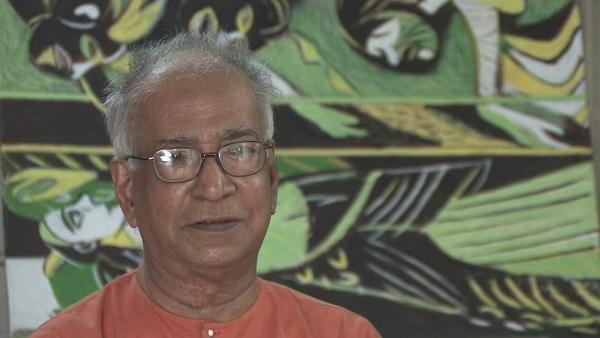NEXT STORY

The critical scene – the hindrance of global rating
RELATED STORIES

NEXT STORY

The critical scene – the hindrance of global rating
RELATED STORIES


|
Views | Duration | |
|---|---|---|---|
| 61. Changes in the art world – information itself is not enough | 66 | 02:43 | |
| 62. Drawing | 112 | 02:34 | |
| 63. Critical studies | 52 | 03:52 | |
| 64. The critical scene – the hindrance of global rating | 58 | 02:28 | |
| 65. Geeta Kapur’s book on me | 106 | 01:19 | |
| 66. Art and visual experience | 146 | 06:39 | |
| 67. Space and depth in my paintings | 78 | 01:45 | |
| 68. Comedy, innocence, tragedy - my Oxford paintings | 59 | 08:06 | |
| 69. Somnath Hore | 87 | 08:00 | |
| 70. Jogen Chowdhury | 72 | 02:28 |


Part of the Baroda project was not to have just art history but to have critical studies, and that seems to have been lost both in Baroda, and perhaps more generally in India?
I know, it is true. It is quite true. The whole idea is that when the art criticism thing started, of course it did not have all the kind of necessary resources for that because the first thing is that there are two or three kinds of criticism we can think about. One is somebody, sort of a criticism that leads onto connoisseurship but in a certain way of creation, what is better than what and that kind of a thing, then criticism that puts various works of art in a kind of lineal succession, that this goes from this to this. Then that is historical criticism. Then there can be another kind of a thing which is explanatory that with all these resources behind, what are the other tendencies going and all? Really speaking we started it, but then the general framework was not enough. I mean, there was some amount of effort at analysing the work, for putting it in a kind of a perspective, and sort of finding out the building blocks kind of. But then when Markand Bhatt started the whole thing, he had built it on certain premises which were rather primitive. That is the Branes Foundation’s premises. They generalised everything, they compared a Titian painting to a Cézanne still life and things of that kind, and that all on the basis of black and white photographs, so, which was ridiculous. But later it didn’t develop, and there was a great resistance even within the university in the academic council. They thought that criticism cannot be taught because criticism needs tools from various disciplines and then you will have to put it all together. That is how, and then critics did not have a job opening at all, so that is why they went into history. So at least history, sort of people trained in history, will be put in the museums or will be put in the schools to teach criticism and the history of art. So slowly criticism sort of wiped out and art history came in. But then even if it is art history, I suppose there should be an amount, a sort of a section of it which gives a lot of importance to criticism, what are the critical tools? Unfortunately, nowadays, these things are also governed by certain trends. Most of the critics want to find out whether it is modern or postmodern, colonial or postcolonial, and there are certain sort of terminologies which are floating always all around, whether it is construction or deconstruction, or whether well, what are the various biases? Is it gender bias or sex bias? Now, the whole question is that these might be elements that govern your final judgement, but then making a whole thesis out of the whole thing, I think doesn’t make much sense to me. But then here I am prepared to accept that I am an old-fashioned man. I don’t want to complicate things with these terminologies.
KG Subramanyan (1924-2016) was an Indian artist. A graduate of the renowned art college of Kala Bhavana in Santiniketan, Subramanyan was both a theoretician and an art historian whose writings formed the basis for the study of contemporary Indian art. His own work, which broke down the barrier between artist and artisan, was executed in a wide range of media and drew upon myth and tradition for its inspiration.
Title: Critical studies
Listeners: Timothy Hyman
Timothy Hyman is a graduate of Slade School of Fine Art, London, in which he has also taught. In 1980 and 1982, he was Visiting Professor in Baroda, India. Timothy Hyman has curated many significant art exhibitions and has published articles and monographs on both European and Indian artists.
Duration: 3 minutes, 53 seconds
Date story recorded: 2008
Date story went live: 10 September 2010